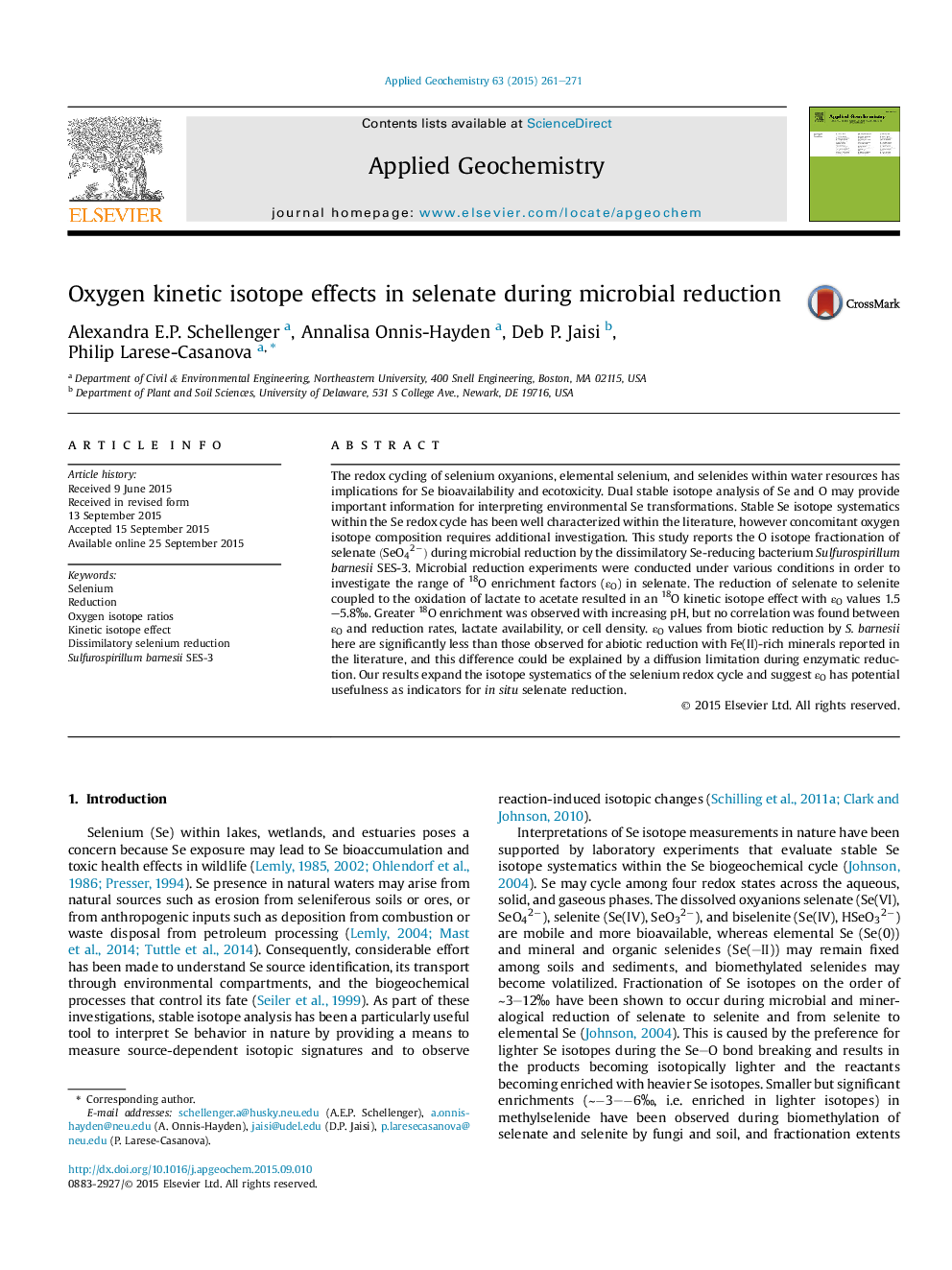| Article ID | Journal | Published Year | Pages | File Type |
|---|---|---|---|---|
| 6334954 | Applied Geochemistry | 2015 | 11 Pages |
Abstract
The redox cycling of selenium oxyanions, elemental selenium, and selenides within water resources has implications for Se bioavailability and ecotoxicity. Dual stable isotope analysis of Se and O may provide important information for interpreting environmental Se transformations. Stable Se isotope systematics within the Se redox cycle has been well characterized within the literature, however concomitant oxygen isotope composition requires additional investigation. This study reports the O isotope fractionation of selenate (SeO42â) during microbial reduction by the dissimilatory Se-reducing bacterium Sulfurospirillum barnesii SES-3. Microbial reduction experiments were conducted under various conditions in order to investigate the range of 18O enrichment factors (εO) in selenate. The reduction of selenate to selenite coupled to the oxidation of lactate to acetate resulted in an 18O kinetic isotope effect with εO values 1.5-5.8â°. Greater 18O enrichment was observed with increasing pH, but no correlation was found between εO and reduction rates, lactate availability, or cell density. εO values from biotic reduction by S. barnesii here are significantly less than those observed for abiotic reduction with Fe(II)-rich minerals reported in the literature, and this difference could be explained by a diffusion limitation during enzymatic reduction. Our results expand the isotope systematics of the selenium redox cycle and suggest εO has potential usefulness as indicators for in situ selenate reduction.
Related Topics
Physical Sciences and Engineering
Earth and Planetary Sciences
Geochemistry and Petrology
Authors
Alexandra E.P. Schellenger, Annalisa Onnis-Hayden, Deb P. Jaisi, Philip Larese-Casanova,
